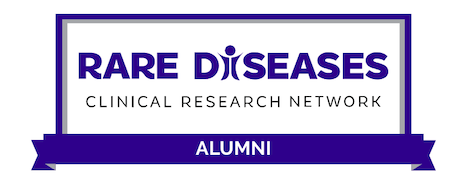Also known as congenital disorder of glycosylation type Iii; CDG2I
COG5-CDG is a rare inherited condition cause by pathogenic variants (mutations) in the COG5 gene, a gene that plays an important role in an important process in our cells called N-linked glycosylation. Symptoms of COG5-CDG usually present in infancy, and may include developmental delays, low muscle tone (hypotonia), seizures, feeding difficulties, liver dysfunction, and congenital malformations. To date, more than 15 individuals with COG5-CDG have been reported in the medical literature.
Symptoms
COG5-CDG is an inherited condition affecting various parts of the body, particularly the nervous system. People with COG5-CDG usually develop signs and symptoms of the condition during infancy.
People with COG5-CDG may experience developmental delay, low muscle tone (hypotonia), seizures, feeding difficulties, enlarged liver (hepatomegaly), enlarged spleen (splenomegaly), and a range of other organ involvement. Additional features can include reduced growth (failure to thrive), vision issues, differences in how the heart is formed (cardiac anomalies), and variations in facial features (facial dysmorphism). On blood tests, people with COG5-CDG may have abnormalities in different lab values, including elevated liver enzymes, abnormal coagulation, and abnormal transferrin glycosylation. Some individuals shown signs of shrinking of part of the brain called the cerebellum (cerebellar atrophy).
Diagnosis
A blood test looking at glycosylation of proteins in the blood (transferrin glycosylation) is not always abnormal in people with COG5-CDG. Because of this, diagnosis relies on genetic testing detecting pathogenic variants (mutations) in the COG5 gene. Everyone has two copies of the COG5 gene, one inherited from each of their parents. People with COG5-CDG have a pathogenic variant in both copies of their COG5 gene. This is called autosomal recessive inheritance.
Treatment and Prognosis
Treatment for COG5-CDG focuses mainly on managing the symptoms of the condition and preventing complications. There is no cure for COG5-CDG, but supportive care including physical therapy, occupational therapy, and speech therapy can help improve quality of life. Seizure management including the use of medications may also be necessary. Early intervention is important for optimizing developmental outcomes, although prognosis can vary depending on the severity of symptoms. Some people may live into adulthood with significant intellectual disability and physical disability, while others have a more severe course with early death. To date, there have only been 15 people with COG5-CDG reported in the medical literature.

